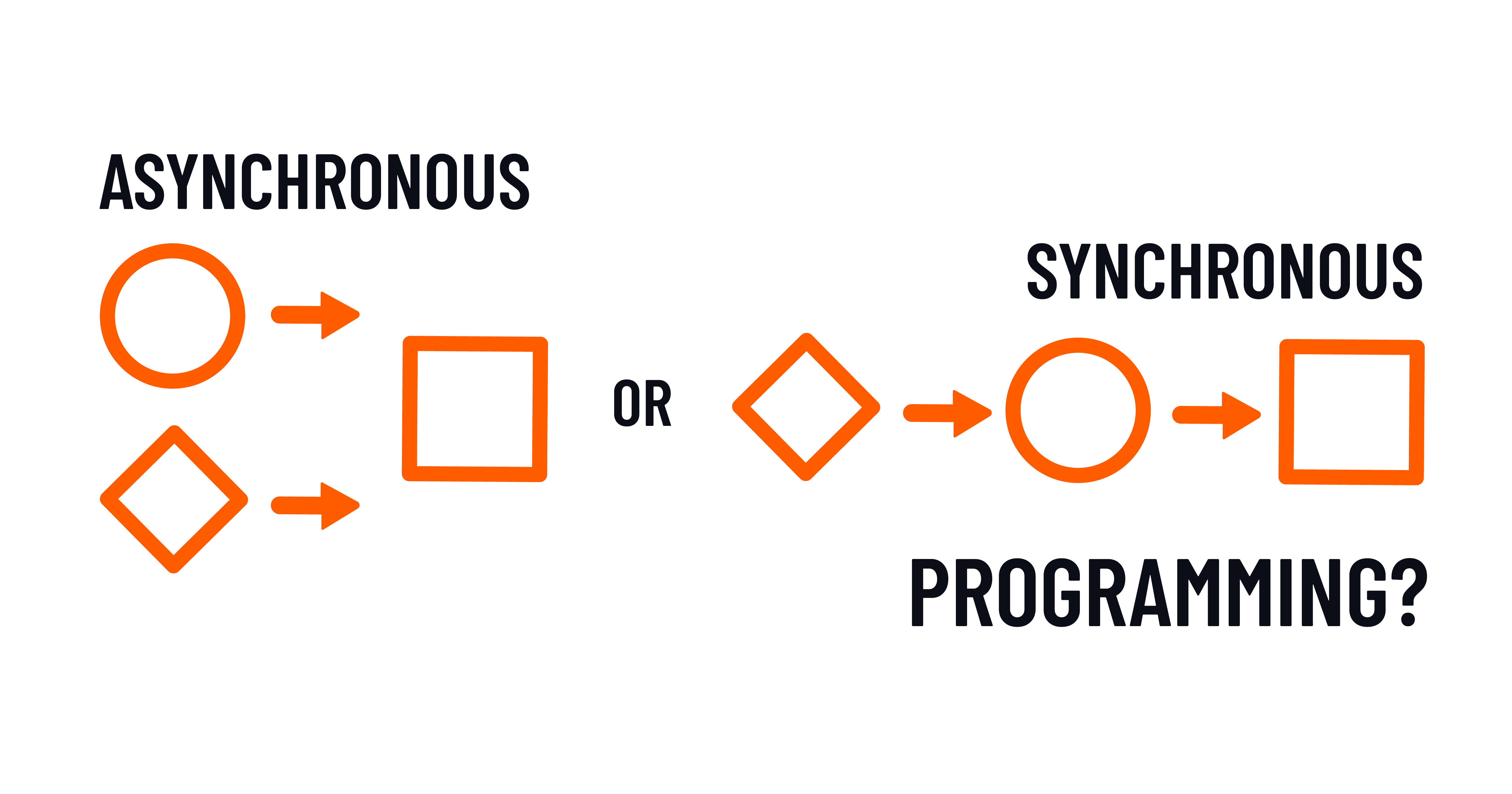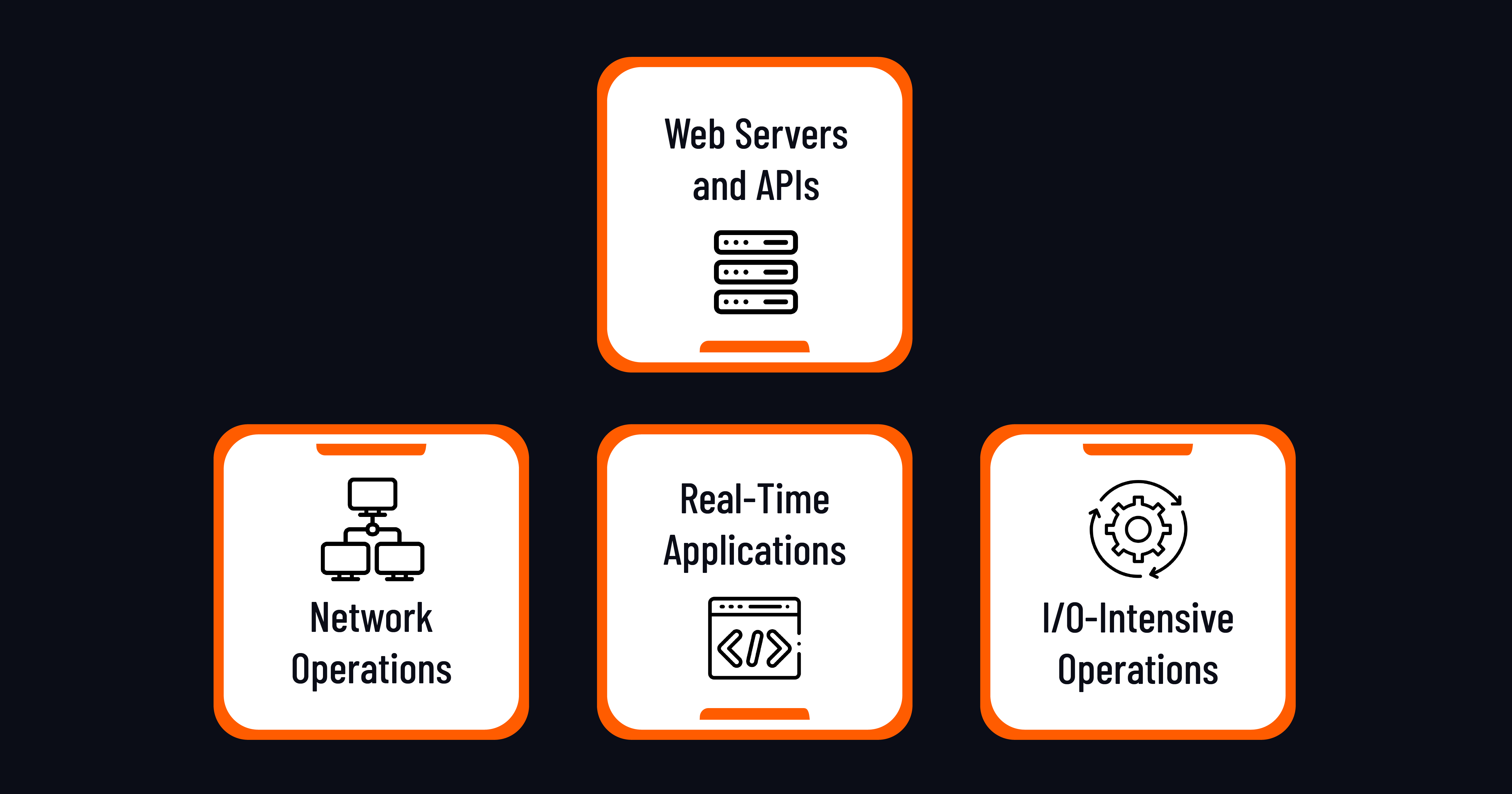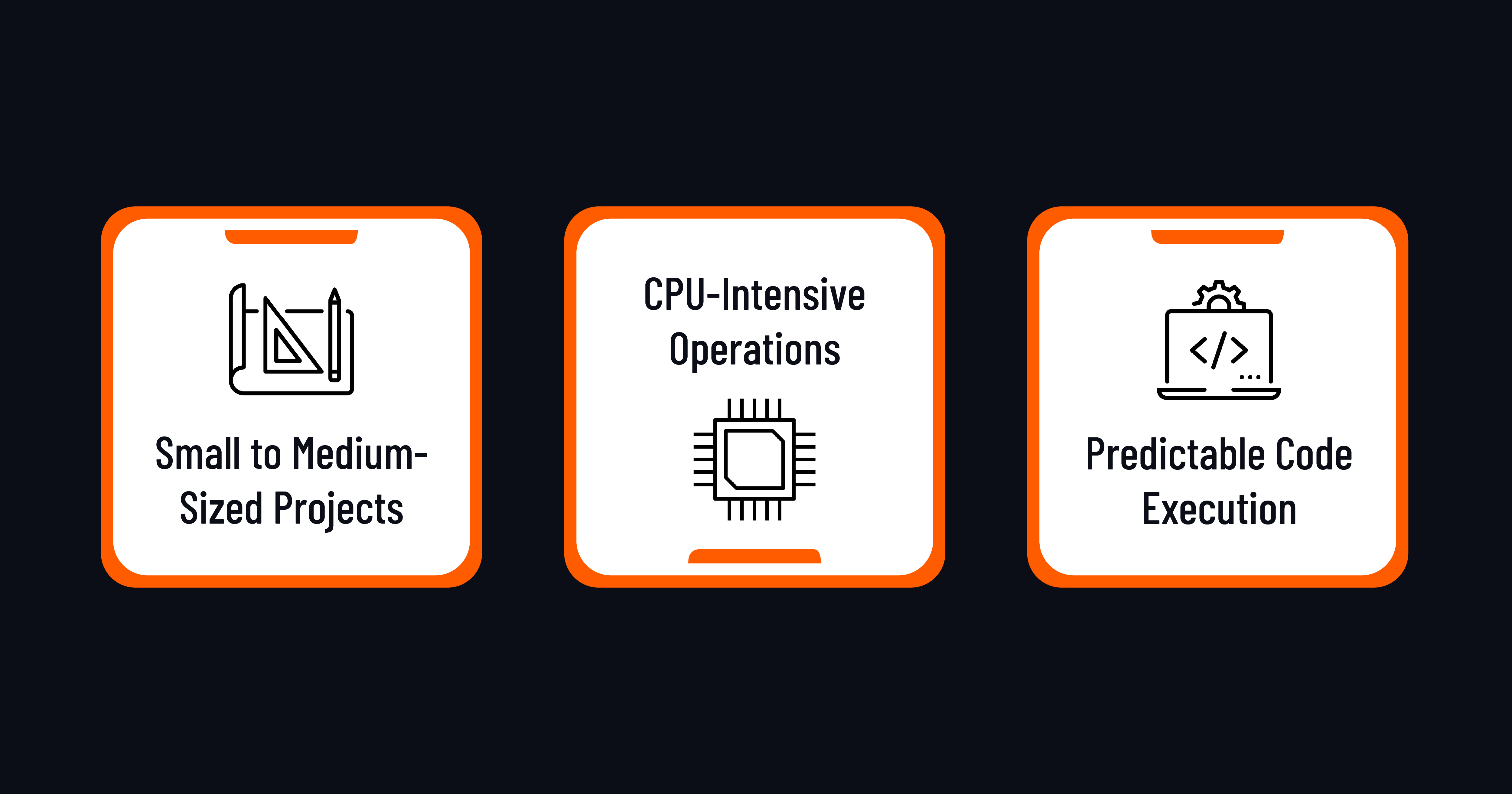
Maria Chojnowska
5 September 2023, 5 min read

What's inside
- Understanding Asynchronous and Synchronous Programming
- Which is Better: Asynchronous or Synchronous Programming?
- When to Use Asynchronous Programming and Synchronous Programming?
- Pros and Cons of Synchronous and Asynchronous Programming
- Conclusion
In the world of programming, developers are constantly seeking ways to optimize the performance and efficiency of their applications.
Asynchronous and synchronous programming are popular approaches that often come into the spotlight. Asynchronous programming allows tasks to run concurrently, enabling efficient utilization of resources and reducing wait times. On the other hand, synchronous programming executes tasks sequentially, making it easier to reason about the code flow.
This blog post will compare asynchronous and synchronous programming, exploring their strengths, weaknesses, and use cases. We will seek to answer the fundamental question: which approach is better for your project?
Understanding Asynchronous and Synchronous Programming
Before we dive into the comparison, let's briefly overview asynchronous and synchronous programming.
Synchronous Programming
In synchronous programming, tasks are sequentially executed one after another. The program waits for each task to complete before moving on to the next one.
This approach is straightforward, easy to understand, and suitable for smaller projects or when the order of execution is crucial.
Asynchronous Programming
Asynchronous programming, on the other hand, allows multiple tasks to run concurrently. Tasks that involve waiting for I/O operations or network requests can be executed independently, making it possible to handle numerous operations simultaneously.
Asynchronous programming is particularly beneficial for large-scale projects with high concurrency and I/O-bound operations.
Which is Better: Asynchronous or Synchronous Programming?

The choice between asynchronous and synchronous programming largely depends on the nature of your project and its specific requirements.
Let's explore some key factors to consider when making this decision.
Performance and Efficiency
Asynchronous programming shines in scenarios where performance and efficiency are paramount. Asynchronous programming significantly reduces wait times and optimizes resource utilization when dealing with numerous I/O-bound tasks, such as reading from databases or making HTTP requests. However, synchronous programming may sometimes outperform asynchronous programming for CPU-bound tasks requiring intense computation due to the overhead of managing asynchronous operations.
Code Complexity and Maintainability
Synchronous programming is generally more straightforward to implement and comprehend, making it easier to reason about the code flow. This simplicity can be advantageous for smaller projects or when code maintainability is a primary concern. On the other hand, asynchronous programming, while powerful, can be more complex due to the need for handling callbacks, promises, or async/await constructs. This complexity may require additional effort in debugging and maintaining the codebase.
Scalability and Concurrency
Asynchronous programming takes the lead in terms of scalability and handling high levels of concurrency. Asynchronous tasks can be processed concurrently, allowing your application to handle more users or requests simultaneously. This becomes crucial for web servers, chat applications, or any system where handling multiple operations concurrently is essential.
Blocking vs. Non-Blocking Operations

A significant distinction between synchronous and asynchronous programming lies in blocking and non-blocking operations.
Synchronous operations block the execution of subsequent code until the current task completes. This can lead to inefficiencies, especially when dealing with I/O-bound tasks that involve waiting for external resources. In contrast, asynchronous operations are non-blocking, enabling other tasks to continue processing while waiting for I/O-bound operations to complete.
When to Use Asynchronous Programming and Synchronous Programming?
Asynchronous Programming

Asynchronous programming is particularly beneficial in the following scenarios:
- Web Servers and APIs
Asynchronous programming allows the server to efficiently manage concurrent connections when handling many incoming requests, resulting in improved response times.
- Network Operations
Tasks involving network operations, such as making HTTP requests or downloading files, can be efficiently executed asynchronously, minimizing wait times.
- Real-Time Applications
Applications like chat systems, gaming servers, or live streaming platforms can significantly benefit from asynchronous programming, ensuring smooth and uninterrupted user experiences.
- I/O-Intensive Operations
Any operation that involves significant I/O wait times, such as reading and writing files or querying databases, can be optimized through asynchronous programming.
Synchronous Programming

Synchronous programming is well-suited for specific use cases:
- Small to Medium-Sized Projects
For smaller projects with limited complexity and concurrency requirements, synchronous programming can offer a more straightforward and easier-to-maintain solution.
- CPU-Intensive Operations
Tasks that heavily rely on CPU processing and do not involve significant I/O wait times may perform better in a synchronous environment.
- Predictable Code Execution
When the precise order of execution is critical to achieving the desired outcomes, synchronous programming provides a transparent and predictable code flow.
Pros and Cons of Synchronous and Asynchronous Programming
| Synchronous Programming | |
|---|---|
| Pros | Cons |
| Simple and easier to implement. | Inefficient for I/O-bound operations. |
| Predictable code execution. | Can lead to longer wait times for specific tasks. |
| Effective for smaller projects with lower concurrency. | Limited scalability for high-concurrency scenarios. |
| Asynchronous Programming | |
|---|---|
| Pros | Cons |
| Improved performance and resource utilization for I/O-bound tasks. | Complex to implement and debug. |
| High concurrency and scalability. | Potential callback hell or promise chain. |
| Ideal for real-time applications and network operations. | May not always outperform synchronous programming for CPU-bound tasks. |
Conclusion
In conclusion, the decision to use asynchronous or synchronous programming largely depends on the specific requirements of your project. Asynchronous programming excels in scenarios involving I/O-bound tasks, high concurrency, and real-time applications, offering improved performance and scalability. On the other hand, synchronous programming is preferable for smaller projects with predictable code execution and CPU-bound tasks.
As a developer, understanding the strengths and weaknesses of both approaches will enable you to make informed decisions that align with your project's goals. Whichever method you choose, it is essential to be proficient in both asynchronous and synchronous programming, as each has its place in the developer's toolkit.
Remember, the best approach is the one that suits your project's unique needs and objectives.
To get started or learn more, contact us at Sunscrapers, and let's work together to elevate your projects to new heights!


